Today, we’ll combine different cool stuff: cartopy, Google Maps tiles, SRTM elevation data and shaded relief maps !
We will need cartopy (+ dependencies), which you can install from source, or from C. Gohlke’s prebuilt binaries for Windows users.
The first map we create will simply show a 1 degree-square zone including Sudelfeld (where I actually am attending “MESS: ObsPy meets Array Processing”). This map will show Google Maps tiles in the background and a small star where the ski resort actually is (see full code for imports needed) :
## Subplot 1: Google Maps Tiles
plt.figure(figsize=(10, 10))
ax = plt.subplot(111, projection=ccrs.PlateCarree())
ax.set_extent([12.0, 13.0, 47.0, 48.0])
gg_tiles = GoogleTiles()
ax.add_image(gg_tiles, 10)
plt.scatter(lon, lat, marker=(5, 1), color='red', s=200)
plt.title("Welcome to Sudelfeld")
this will plot this map:
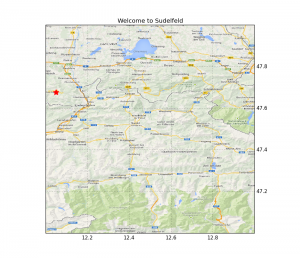 Next step: get SRTM data automatically using one of cartopy’ many interfaces:
Next step: get SRTM data automatically using one of cartopy’ many interfaces:
## Subplot 2: STRM Map
plt.figure(figsize=(15, 10))
ax = plt.subplot(111, projection=ccrs.PlateCarree())
elev, crs, extent = srtm_composite(12, 47, 1, 1)
elev = np.ma.masked_less_equal(elev,0,copy=False)
plt.imshow(elev, extent=extent, transform=crs,
cmap='gist_earth', origin='lower')
Sadly, there are a lot of gaps in SRTM data for the Alps, so we have to mask the elev array to hide bad values, and the resulting plot is:
To overcome this lack of information, we will use the method described in GDAL’s FillNoData method:
srcband = src_ds.GetRasterBand(1)
dstband = srcband
maskband = srcband
smoothing_iterations = 0
options = []
max_distance = 200
result = gdal.FillNodata(dstband, maskband,
max_distance, smoothing_iterations, options,
callback=None)
elev = dstband.ReadAsArray()
Apart from a few object tranformation, the core of this function is the maskband for which zero values are considered invalid and non-zero are valid. The max-distance is a threshold for the biggest distance allowed between one invalid point and the closest valid one. The elev array we receive back contains no more gaps :
Step 3: get the slope and aspect of the SRTM data, using numpy.gradient and numpy.arctan/arctan2:
## Subplot 23: Shaded Relief Map
plt.figure(figsize=(10, 10))
ax = plt.subplot(111, projection=ccrs.PlateCarree())
x, y = np.gradient(elev)
slope = np.pi/2. - np.arctan(np.sqrt(x*x + y*y))
# -x here because of pixel orders in the SRTM tile
aspect = np.arctan2(-x, y)
altitude = np.pi / 4.
azimuth = np.pi / 2.
shaded = np.sin(altitude) * np.sin(slope)\
+ np.cos(altitude) * np.cos(slope)\
* np.cos((azimuth - np.pi/2.) - aspect)
plt.imshow(shaded, extent=extent, transform=crs,
cmap='Greys', origin='lower')
The definition of the shaded variable comes from here, I simply rewrote the processing of the slope and aspect using state of the art numpy routines. For a given azimuth and altitude of the Sun (here it is early morning, Sun on the east), the resulting map looks like:
Done!
From now on, the full-codes will be presented as IPython Notebooks in a GitHub repository and visible using nbviewer
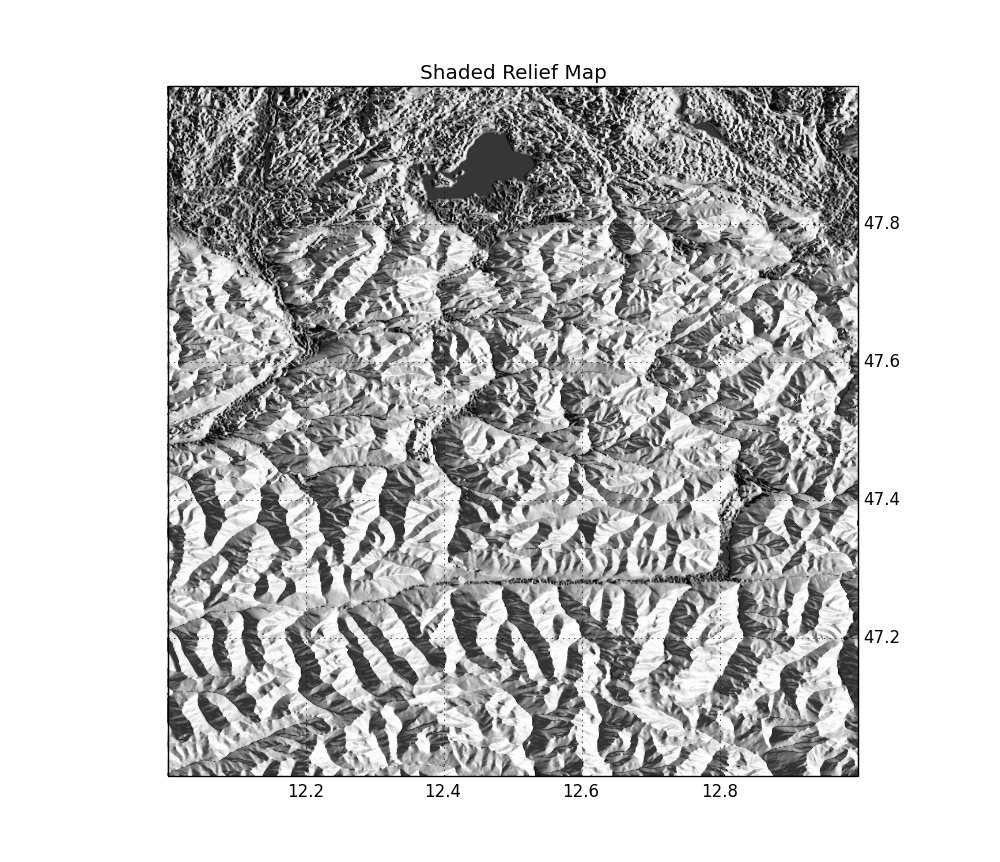
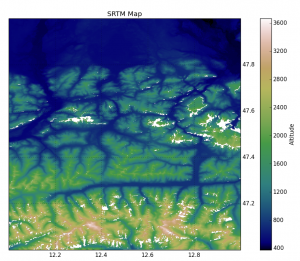
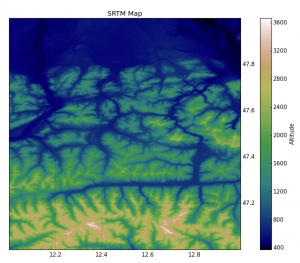
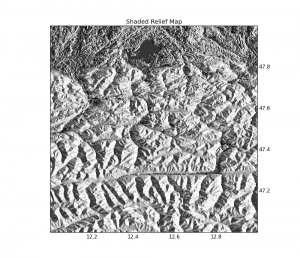

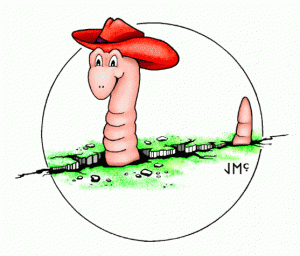
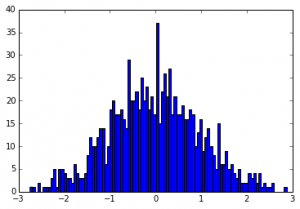
Is it possible to update this nice tutorial since it is not working with latest moduls anymore?
The first code example currently seems to error: https://github.com/SciTools/cartopy/issues/749